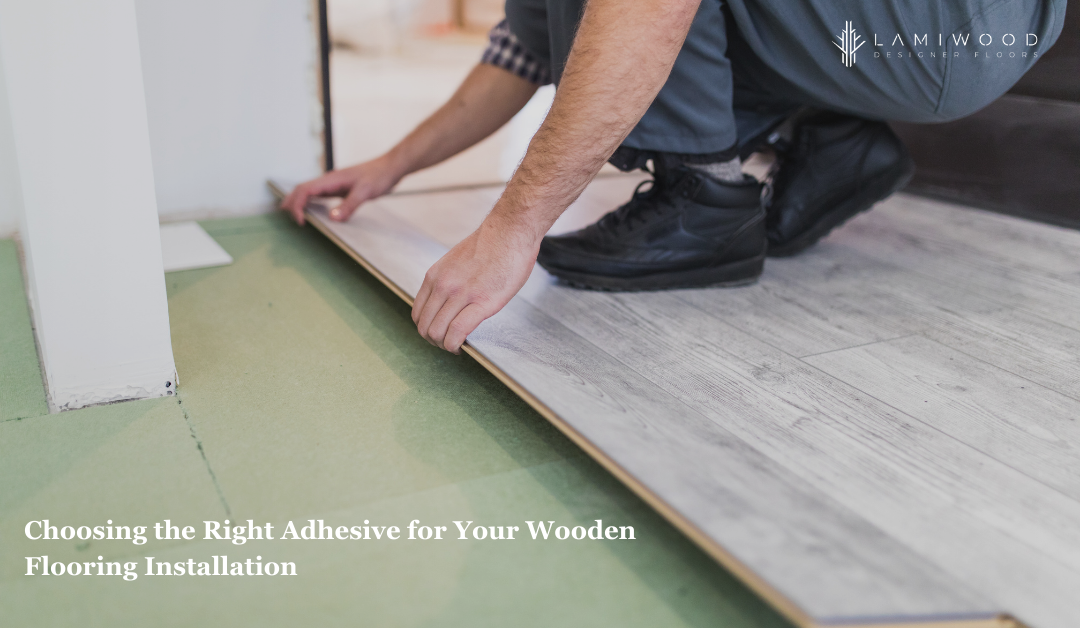When installing wooden flooring, choosing the right adhesive is as important as selecting the perfect planks. The right glue can ensure a strong, stable, and long-lasting installation, while the wrong adhesive can lead to gaps, shifting, or even damage to your adorable new floors. In this blog post, we’ll explore the world of wooden flooring adhesives, and share tips for choosing the right glue for your specific installation needs.
Types of Wooden Flooring Adhesives
Several types of adhesives can be used for wooden flooring installations, each with its unique properties and benefits. Here are some of the most common types of wooden flooring adhesives:
- Pressure-Sensitive Adhesives (PSA): PSA adhesives are designed to create a strong, permanent bond between the wooden flooring and the subfloor, and are typically used for glue-down installations. They are applied to the subfloor using a trowel or roller, and the wooden planks are then pressed into place.
- Moisture-Cured Urethane Adhesives: These adhesives are designed for use in areas with high moisture or humidity, and create a strong, water-resistant bond between the wooden flooring and the subfloor. They are typically more expensive than other types of adhesives but offer superior moisture protection.
- Multi-Purpose Adhesives: Multi-purpose adhesives are versatile, all-in-one products that can be used for a variety of flooring installations, including wooden, vinyl, and carpet. They are typically less expensive than other types of adhesives, but may not offer the same level of moisture protection or bond strength.
- Double-Sided Tape: While not technically an adhesive, double-sided tape can be used for smaller wooden flooring installations, such as in closets or pantries. The tape is applied to the subfloor, and the wooden planks are then pressed into place.
Factors to Consider When Choosing a Wooden Flooring Adhesive
When selecting an adhesive for your wooden flooring installation, there are several key factors to consider, including:
- Subfloor Type: The type of subfloor you have will impact the type of adhesive you need. For example, if you have a concrete subfloor, you may need a moisture-cured urethane adhesive to prevent moisture damage.
- Moisture Level: If your installation area has high moisture or humidity levels, you’ll need an adhesive that is specifically designed to resist moisture, such as a moisture-cured urethane adhesive.
- Installation Method: The type of installation method you’re using will also impact the type of adhesive you need. For example, if you’re doing a glue-down installation, you’ll need a pressure-sensitive adhesive.
- Manufacturer Recommendations: Always check the manufacturer’s recommendations for the specific type of wooden flooring you’re installing, as they may have specific adhesive requirements or recommendations.
Tips for Using Wooden Flooring Adhesives
Once you’ve selected the right adhesive for your wooden flooring installation, it’s important to follow proper application and installation techniques to ensure a successful result. Here are some tips for using wooden flooring adhesives:
- Read the Instructions: Before using any adhesive, be sure to read the manufacturer’s instructions carefully, including guidelines for application, drying time, and cleanup.
- Prepare the Subfloor: Make sure your subfloor is clean, dry, and level before applying any adhesive. Repair any cracks, holes, or other damage, and remove any old adhesive or debris.
- Use the Right Tools: Depending on the type of adhesive you’re using, you may need specific tools, such as a trowel or roller, to apply the adhesive evenly and accurately.
- Allow for Proper Drying Time: Most adhesives require a specific drying time before you can install the wooden flooring, so be sure to allow adequate time for the adhesive to set up properly.
- Clean Up Promptly: To avoid damaging your new wooden flooring, be sure to clean up any excess adhesive promptly, using the manufacturer’s recommended cleaning methods.
Conclusion
Choosing the right adhesive for your wooden flooring installation may seem like a small detail, but it can have a big impact on the success and longevity of your adorable new floors. You can ensure a strong, stable, and long-lasting wooden flooring installation by understanding the different types of adhesives available, considering key factors like subfloor type and moisture level, and following proper application and installation techniques. So go ahead and take the time to choose the right adhesive for your specific needs – your adorable wooden floors (and your peace of mind) will thank you!

